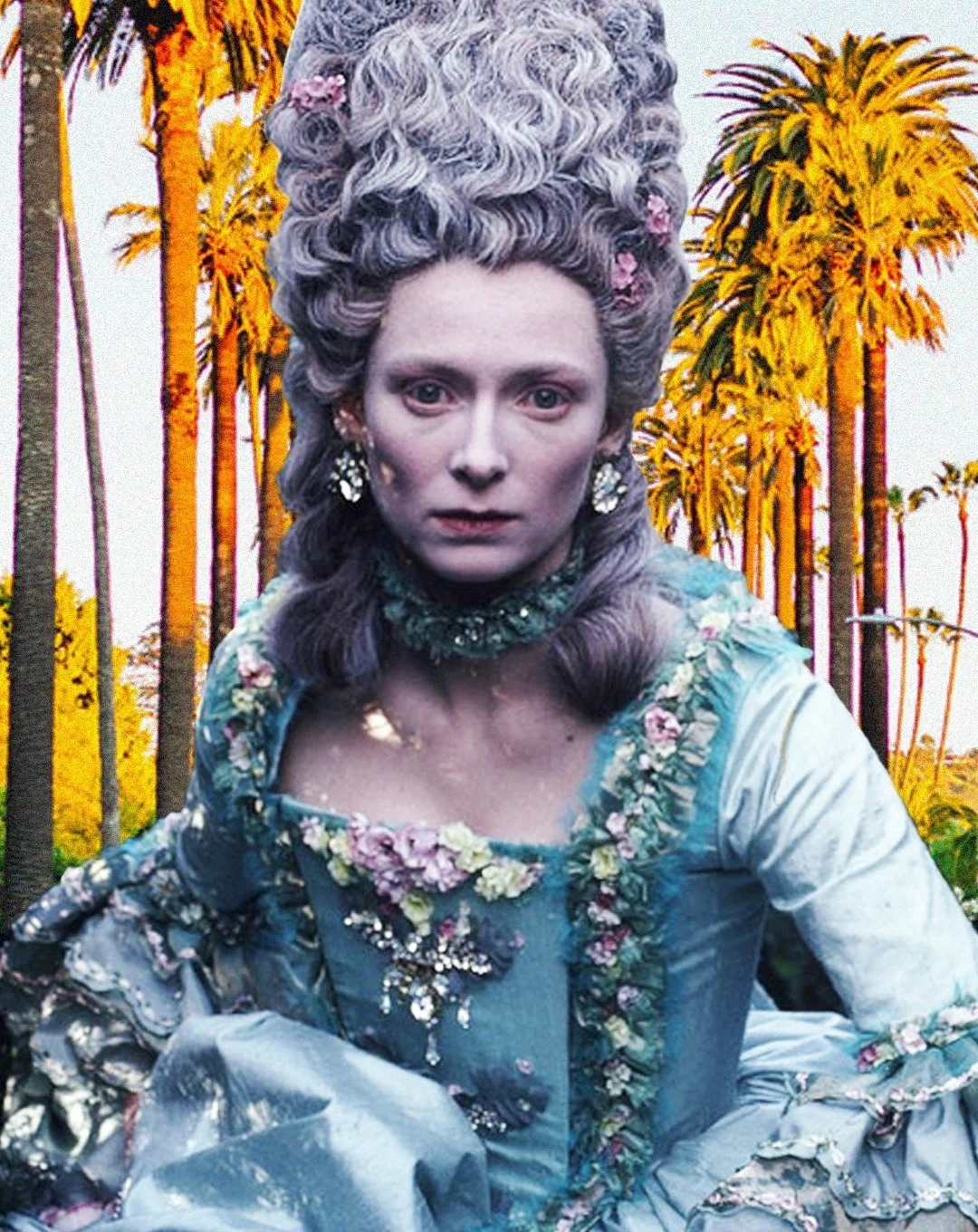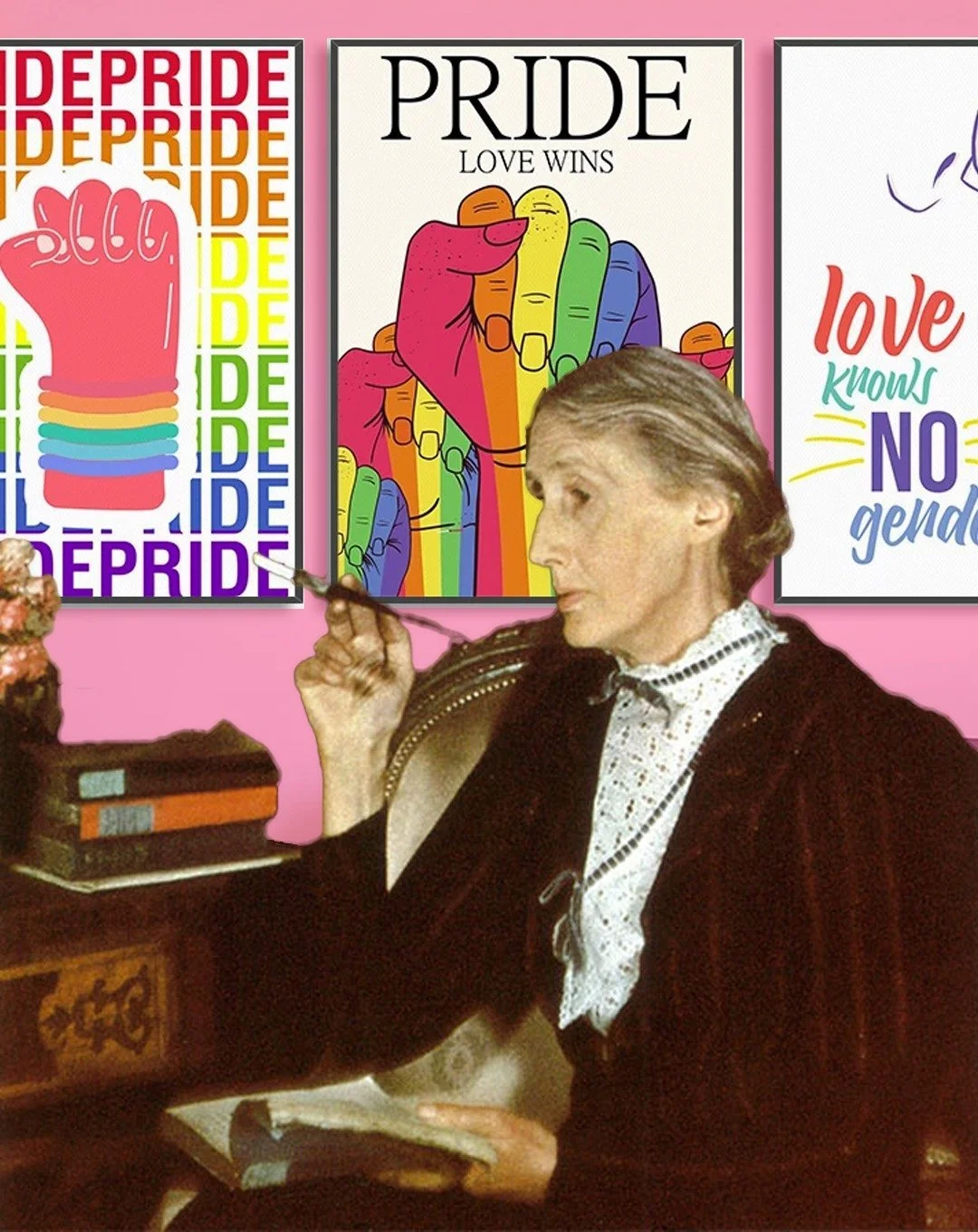Frock Consciousness: Everything Virginia Woolf has Taught Me About Personal Style
In a later scene during the action of Sally Potter’s award-winning film Orlando, starring Tilda Swinton and adapted from the 1928 novel by Virginia Woolf, (having to do with the androgynous Orlando who discovers they can leap between genders and 400 years of English history) our protagonist enters a maze after having refused the archdukes hand in marriage. Time becomes dizzying and vague as Orlando moves through grassy trails, dashing in a baby-blue robe a la française and an 18th century towery wig. But, as she turns a sharp corner, her attire transforms into a dark blue Victorian gown—her hair a burning red—she exits the maze through the mist of a new century. I recall with the utmost clarity watching the scene in the winter of 2014. I was thirteen and new to high-school, and this was my first introduction to the works of Virginia Woolf—in film form, at least—but it planted the curious idea, written by Woolf in Orlando, that “clothes are but a symbol of something hid deep beneath.”
Something hid deep beneath. I couldn’t quite get those words out my mind. Who was hidden deep beneath me? Did I know her? Did I want to know her: a pale reflection in a glass mirror, in jeans and a multi-coloured jumper? If I poked her and prodded her, if I dressed her in the finest silks around, would she turn into something magical and more? I wanted to bend with time, like Orlando, take off my grey cloak and craft a new identity unrestrained by restrictions. Could I do that, I thought as a pimply thirteen-year-old girl? Could I push past baffled glances and subtle smirks to find a personal style?
Umm…no. Most certainly not. It was the eighth grade, I didn’t quite have the budget for experimentation, and, besides, I wanted to skip through my teens unscathed by bullying—or semi-unscathed, at best.
Being perceived weighs heavily on the mind. Virginia Woolf knew that. Confiding in her diary, she wrote, time and time again, on the enigmatic matter that is clothing: “Why am I calm and indifferent as to what people say of Night and Day, and fretful for their good opinion of my blue dress?”; “I am resigned to my station among the badly dressed”; and “My present reflection is that people have any number of states of consciousness: & I should like to investigate the party consciousness, the frock consciousness.”
___STEADY_PAYWALL___
It was this contradictory relationship with clothing, the perplexing delight and mortification of being perceived from the outside—the “frock consciousness”—that intrigued Woolf and troubled me.
On one hand, challenging the tasteful norm of fashion was liberating; on the other, the possibility of judgement was—and still is— enough to make me physically sick. Frivolous as they may be, I find clothes to be the connecting layer between myself and the world, an unspoken voice and an entryway to my inner reality. And, as I discovered from reading and re-reading Woolf’s fiction from the public library, that clothing is as much a part of her characters’ storyline as it is a part of mine. It would reveal rather and awaken fervent feelings, generally stirred by the judgement of others—of social order and class and the monetary difference between ‘well-dressed’ and ‘badly-dressed’ characters.
Woolf’s interest in fashion is most evidently found in the character of Mabel Waring from her short story The New Dress (1924). While Clarissa Dalloway sits at her dressing table before her party, gathering herself in a mermaid-green evening gown, Mabel looks into a mirror, wearing a pale yellow silk dress, self-consciously picking herself apart as she realizes—from the subtle looks of other party guests—that her new dress is not exactly ‘right’. In fact, if there is one thing Virginia Woolf has taught me about fashion, it is that none of us are immune to the daily anxieties of getting dressed—no matter how intellectually skilled you believe yourself to be. Is what I’m wearing okay for this party? Will people look at me with pity? Will they be able to tell I am wearing a very old piece of clothing, borrowed from a friend?
Much like Mabel, Virginia Woolf was known to stick out like a sore thumb. She was famous for her outlandish attire: orange stockings with pumps, oversized suits, brash florals and wide-brimmed hats. In fact, Madge Garland, a Vogue Fashion Editor at the time, described Woolf as “instantly noticeable” (for unfashionable reasons)— “she appeared to be wearing an upturned wastepaper basket on her head.” Aware that her personal style would never fit the mould of her time, Woolf wrote in her diary: “I am giving up hope of being well-dressed.”
There’s an artificiality to being well-dressed, and a questionable suppression, even, in the social order of fashionability that I couldn’t grasp at thirteen. I didn’t understand why my clothing never quite looked as put together as other, wealthier girls—as effortlessly cool and chic in casual attire. Virginia Woolf helped me figure it out, the obvious yet shrouded logic, that fashionability is tied to capital. As Mabel vents, “fashion meant cut, meant style, meant thirty guineas at least.” While not one of us is immune to the brunt of “frock consciousness”, those whose personal expressions are tied to budgetary concerns will always, in some way, experience frock consciousness to a higher degree.
“Personal style isn’t linear. It can shift and morph, like in Orlando, through lived experience.”
For this reason, like Woolf, I have given up on being fashionable. I think the realisation came after I moved to a bigger city for college. As I set out to learn a new landscape, I observed an eclectic assortment of personalities from all walks of life; people who were like me and unlike me, people who lived boldly and defiantly and urged me to do the same—regardless of the rigid rules of being ‘well-dressed’. I experimented with shape and style; from frilly, pink and garish skirts to oversized and masculine attire. I have learned to be amused by the baffled stare of an old lady, because, it is in my own misty maze, that I am having my most fun.
Personal style isn’t linear. It can shift and morph, like in Orlando, through lived experience. Virginia Woolf taught me that there is bravery in getting up and getting dressed. That to look inwardly and actively attempt to unravel that frock consciousness— and the disparities that come with it— takes courage. Like Orlando, personal style is a journey that cannot be confined by the rigidness of time, and I find—although I’ve grown in self-assuredness— that I am still coming of age in my clothing. Perhaps, looking back, Mabel would realize, today, that her pale yellow dress, with its long skirt and high sleeves, was the most vibrant piece of that party. Perhaps then, she would come—unlike me, at thirteen, in front of that mirror, unsure and afraid—to trust, and relish, in her own view of style.
By Aimee Foord


